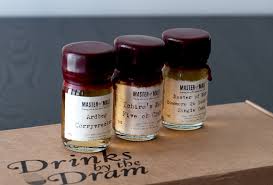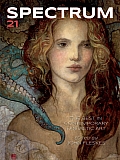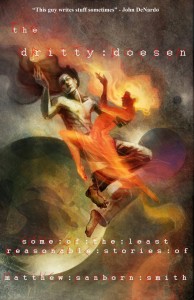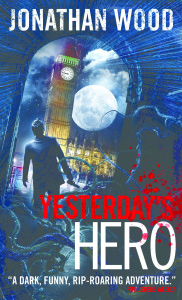We’re a third through November which means we’re a third through NaNoWriMo, for those of you who are participating. I’m sitting this year out (editing a book instead) but I went through it last year, finishing 50K in 24 days. And since it’s the eleventh day of the eleventh month I thought I would share with you eleven pieces advice. And bonus, this advice can be useful whether you’re doing NaNo or if you’re just working like usual.
One: Make a schedule. Stick to it.
Pick a time of day every day when you write. It is sacrosanct. Nobody can have you for this time. Your email cannot have your attention. Twitter, tumblr, and Facebook cannot have your attention. This time is for writing. Whether you say you are going to work for a certain amount of time or to a certain wordcount, treat this time as you would treat needing to get something done for a deadline for work or school.
The reason for this is that routine helps you write. The longer you stick with a writing routine, the easier it will be to start writing. That ‘windup time’ will shrink as you go. To help with this, consider what else you might be able to make part of the routine. Maybe you make a cup of tea before, or light a specific scented candle, or listen to the same music (my books have playlists I listen to when I work on them). When you incorporate these things into your routine, they help prime your brain for writing time, just as a wakeup routine primes you for the day and a bedtime routine primes you for sleep.
And here there’s always someone who says “I can’t write every day!” or “Not all writers write every day” which is true. “Every day” is potentially too demanding for some people with full time jobs and kids which take up a lot of time. If it’s not possible, it’s simply not possible. You have to find the balance between pushing yourself to get to work and pushing yourself into a breakdown. And that really comes down to the individual.
Two: Write, Don’t Edit.
If you’re doing NaNo, you’re going to have to learn to shut off your inner editor and simply get words on the page, even if they aren’t exactly what you want. Some writers edit as they go, and that’s what works for them. But being able to just put down words is a useful skill, regardless of what kind of writer you are.
What I did to quiet my inner editor is write comments to myself inline. I’d say “fix this later” or “research this” or “who talks like that?” Having these notes written down allows my inner editor to have its say without putting a halt on the writing process.
Three: Don’t Know It? Skip It.
Similar to the inner editor, sometimes when you’re writing you realize you don’t know the capital of a country or who is the editor of which paper or other random facts. Or maybe it’s something bigger, like how to build a house or sail a boat. Or, sometimes, you just forget something like your character’s eye color or last name. There are times when it’s good to take a step back and do some research, but when you have a good writing groove going, it may be better to just carry on and not let gaps in knowledge bring you to a grinding halt.
Research notes, like the editing notes, need to be flagged so you can find them quickly. To pull this off, type a series of characters (a “string” in technical terms) you wouldn’t normally use in your novel. I’ve seen “tk” suggested, but personally I use “%%” because you’ll never use it and it scans easier than “tk” does. And for those instances where you forget someone’s name or eye color you can say %%NAME_EYE_COLOR and when the time comes it’s just a quick search and replace on a string you can guarantee hasn’t been used anywhere else.
Four: To-Do Lists are Not Just for Chores.
Sometimes you find yourself ending with good momentum and you know where the scene is about to go. And sometimes you are able to just keep going and write out everything you’ve got figured out. But sometimes you don’t have the time. And sometimes even if you do, it isn’t the best idea because it can leave you too spent to write the next day. Remember that novels are not sprints, they’re marathons.
So a good way to carry that momentum into the next day is, at the end of each writing session, regardless of where you are and how you’re feeling, write down notes for the next little bit. Like “she confronts him about the broken vase” or “they start the chase, but are diverted away from the museum and into the library.” Whatever you need to have on hand so you remember what comes next. So that the following day, when you sit down to write, you know which direction you’re going in.
Five: Eliminate Distractions.
Twitter and Facebook are obvious, but we’re very good at inventing distractions when we don’t want to do something. Maybe you need a glass of water or some cookies, some socks because your toes are cold, maybe you should turn up the heat, oh but the air is so dry obviously you need a humidifier gotta go find one online… it’s not hard to keep from doing something difficult. And writing can be difficult on a brain that isn’t used to going for long stretches.
Part of eliminating distractions is removing temptation, but part is being vigilant over your focus and keeping yourself from inventing and chasing petty distractions to keep your mind from being still enough to do the hard work of writing.
Six: Pedaling Uphill vs Pedaling With the Brakes On.
But sometimes, when your brain is trying to take you away from your writing, it isn’t because it’s having a hard time. Sometimes it’s because something has gone wrong in the book and you simply haven’t figure it out yet. I describe this as pedaling uphill versus pedaling with the brakes on. They’re both hard to do, that’s for sure. But one is hard because you’ve hit a hard patch, and one is hard because something is wrong. The trick is to figure out which one it is.
Seven: Do the Dishes.
Get away from your writing. Stop thinking about it. Do something simple, repetitive, and finite, where your brain can idle. Do the dishes, clean the bathroom, something that doesn’t require creative thought or problem-solving skills. Let your brain rest and sometimes the solution to that tricky scene will simply come to you.
On a related note of solutions that suddenly surprise you, consider picking up some AquaNotes to hang in the shower. They’re waterproof notepads that you can write on with pencil so you don’t lose those ideas that hit you when you’re washing your hair.
Eight: Take Regular Backups.
Dropbox. You don’t really have an excuse at this point. Set up dropbox, and save all your writing in your Dropbox folder. You’ll have an automatic offsite backup for all your writing. (And make sure you set up two-step auth while you’re at it.)
Nine: Sit Up Straight.
So you’ve probably heard about how the way we sit (and the fact that we sit so much) is bad for our health. And you’ve probably heard about the long-term benefits of good posture, the reduced instances of repetitive motion injuries such as tendinitis and carpal tunnel. But for most people, thinking that far in the future is a little hard to do in the moment, especially when you’re trying to sort out what happens next in your novel. Well, did you know that good posture also helps your creativity and productivity? It helps with your focus and your mood which directly impacts how well you think and how much you can do. Unfortunately there is no One True Posture, but the good news is that just means you get to figure out what works best for you!
Ten: Try Cowriting.
Writing is a solitary and potentially lonely activity. Not only are the hours spent writing keeping you away from social interaction, but then there’s a lot of work to be done before you can really share what you’ve done with others. The long gap between work and recognition and the long hours spent alone can be psychologically taxing, even if you’re a wee introvert like me.
So to help combat this, I like to write with others around. It’s nice to have somebody there who’s going through the same crap you are. Every so often you can take breaks from writing (try 45 minutes of writing and 15 minutes of rest) and celebrate or vent what’s going on in your book, and nobody can sympathize with writers like other writers. It’s a great way to get out of your head and realize you’re not as on your own as your solitary work may lead you to believe.
Eleven: Butt In Chair.
Ultimately though, the only way to get a book done is to sit your ass down and do it. It’s not going to get written by just staring at the page and hoping words show up, and it’s never going to get written by puttering around doing things that look like writing but aren’t. And it’s easy to get sucked in by the things of writing that aren’t writing but still make you feel like you’re doing something writing. Tracking word count, futzing with your word processor settings, picking a font, even useful research, none of this is actually getting words on the page.
Even this blog post, as useful as it may be for me to write, is not actually getting my novel edited! So, beware the siren song of anything that keeps you from getting your book done. And good luck with NaNo!
Continue reading


 F/F/H writer looking for inspiration:
F/F/H writer looking for inspiration:






